
Hooking a salmon is often the hard part, which is why it’s so frustrating when one is lost at the net.
Losing a salmon at the net should rarely (never?) happen! This guide will provide a path to rarely if ever losing a fish at the net.
PNWBestLife is here to save you from bad netting and maybe even provide you some thoughts on how to be better at fighting a fish to make netting your fish even easier.
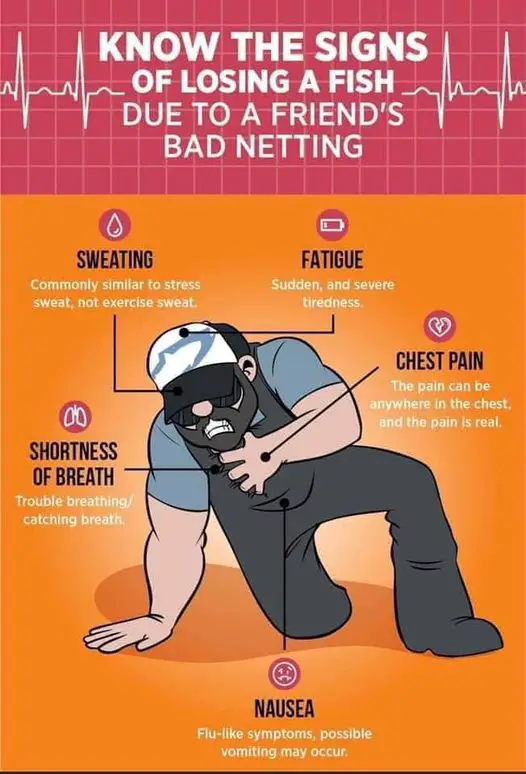
We’ve all had a bad experience with someone (often a friend) trying to net our wonderful big beautiful salmon and in the process either missing the fish or worse knocking the fish off of our lines.
We may even be that friend! There are a few things netters should follow to make sure they do their part correctly, but first, let’s cover some salmon-fighting concepts as the topics overlap.
The Three Phases of Fighting a Salmon to the Net
When we first hook a salmon, it will often put up a fantastic fight.
The strength and speed of a salmon are a few of the reasons why they are such a popular angling target.
Each species of salmon will battle a little differently. A king salmon will make a blistering 100-yard run.
Coho salmon will go arial and wrap themselves in the line. Sockeye will often come in easily initially and then go nuts just out of reach.
You can find more on hooking salmon in the river here.
Let’s call Phase 1, the phase where the salmon has just been hooked and it’s doing its thing depending on species and vitality.
Never attempt to net a salmon during Phase 1.
You might wonder if that’s really a choice, but it’s not that unusual for a salmon to run right at your position giving you the illusion of a netting opportunity, but to take that shot will likely result in missing the fish and potentially knocking the fish off or tanging the net in the gear.
Phase 2 is the first real opportunity to net a salmon.
I call phase 2 when the salmon appears to have lost some energy and it’s either within netting range or just outside netting range.
However, the salmon still has multiple 10-yard + runs left in it. A big salmon in phase 2 can still break your line and will rip off another run just as you go to net it.
Phase 3 is when the salmon has really tired itself out.
Usually, phase 3 is obvious as the fish will turn sideways or upside down in the water.
However, a big king salmon will often take a long time to get to phase 3. There are also a few problems with waiting until phrase 3 to net a salmon:
- Most salmon in the rivers grow fairly serious teeth. The longer you battle a salmon the more chances you have to rub your leader against the teeth and potentially break it off
- In some areas, you cannot retain certain types of salmon or a salmon with an intact adipose fin. Fighting a salmon to exhaustion you intend to release makes the pre-spawn mortality much more likely. Our opportunity to fish in the future is dependent on wild salmon spawning and increasing in number.
Salmon Netting Technique
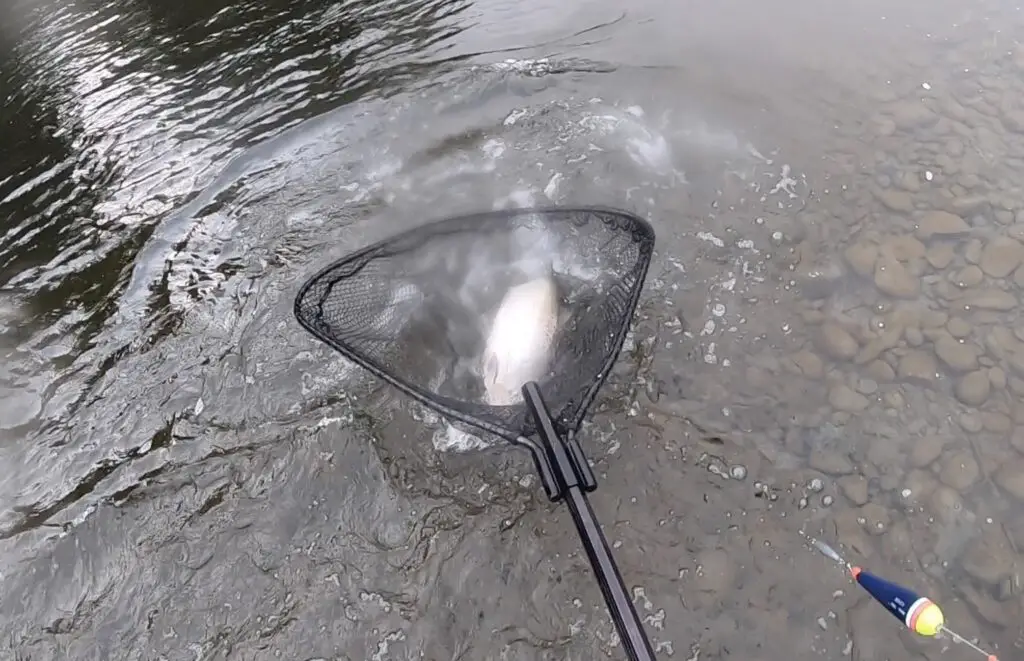
Let’s talk about the technique of the person netting the salmon. I also want to talk about salmon nets as not all are appropriate to use.
There are three rules a netter must follow when netting their friend’s (or anyone’s) fish
- Never attempt to net a salmon during phase 1. Always wait for it to lose that initial energy and calm down a bit as the angler draws the fish within netting range.
- Always approach the salmon from the downstream direction when attempting to net. A salmon in phase 2 may decide to make another run by charging downstream. If the netter has attempted to stab from downstream the salmon may swim right into the net
- Always attempt to net a salmon head first. You will always miss a few netting attempts, but this way you will avoid missed attempts that risk losing the salmon.
If you follow the above 3 rules, you will likely have a much higher successful netting percentage.
What landing net should you use for salmon?
If we are talking about king salmon, a large hoop and a large handle are extremely critical, but also very important for salmon fishing is a knotless net.
These knotless nets are made of mesh rubber and they avoid the issue where a knotted net removes the protective slime layer salmon need to make it upriver to spawn.
With selective-gear rules in Washington State, knotless nets are now required to land a fish!
Salmon that lose this protective slime will not be as successful in navigating through skinny water and surviving to spawn.
Again, if you like salmon fishing and understand that our future opportunity depends on the successful spawning of wild salmon…spend the money and get one of these nets.
I would say 10% or less of anglers I encounter in the freshwater or the saltwater are using a knotless net for salmon. We can do better!
Salmon Fighting Technique to Help a Netter
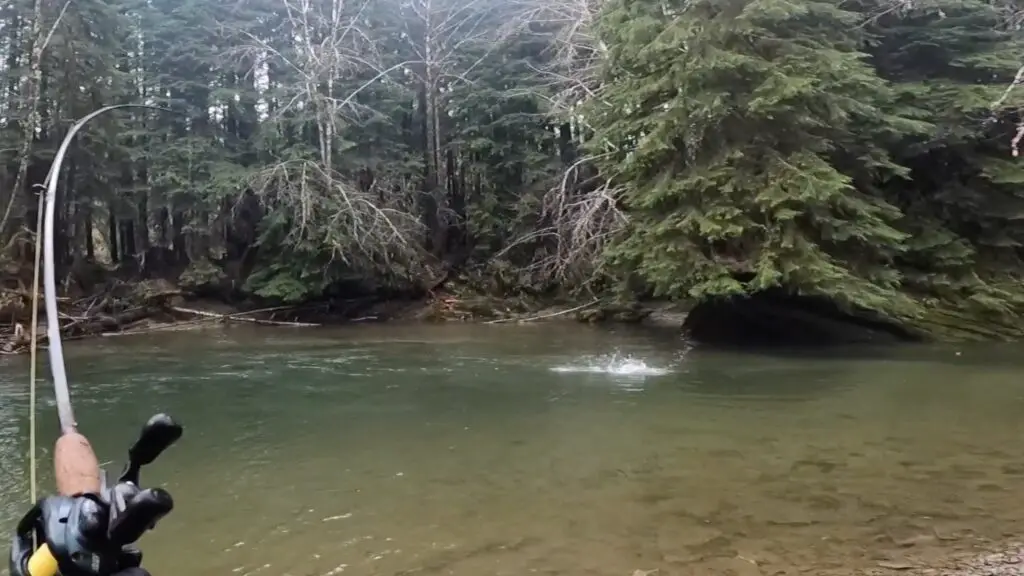
Okay, so your friend lost your fish while trying to net it…What if I told you that it was probably your fault? What?!?
Yeah, I’m saying that a good chunk of the “bad netting” out there is actually bad fish fighting technique.
You may need to buy one of your buddies a beer after reading this.
When a salmon is in phase 2 and your friend goes to net the fish…If you don’t control the salmon in that critical split second and somehow he or she misses it and knocks it off…that’s on you.
What am I talking about?
When we hook a king salmon, your drag had better be tight enough to drive that hook tine through a very tough jaw.
Sometimes, you may want to back the drag off after that initial hook-set.
Why back off the drag? Because we want a salmon to run. A big king salmon that cannot pull the line has a much greater chance of breaking your leader, spitting the hook, or even breaking your rod (depending on what you’re using).
But let’s say you don’t back off the drag at all. A big king salmon can often pull line on ANY drag setting you use unless you have a seriously beefy reel that probably isn’t appropriate for river fishing.
Here’s my guide to the best reel for salmon fishing in the river.
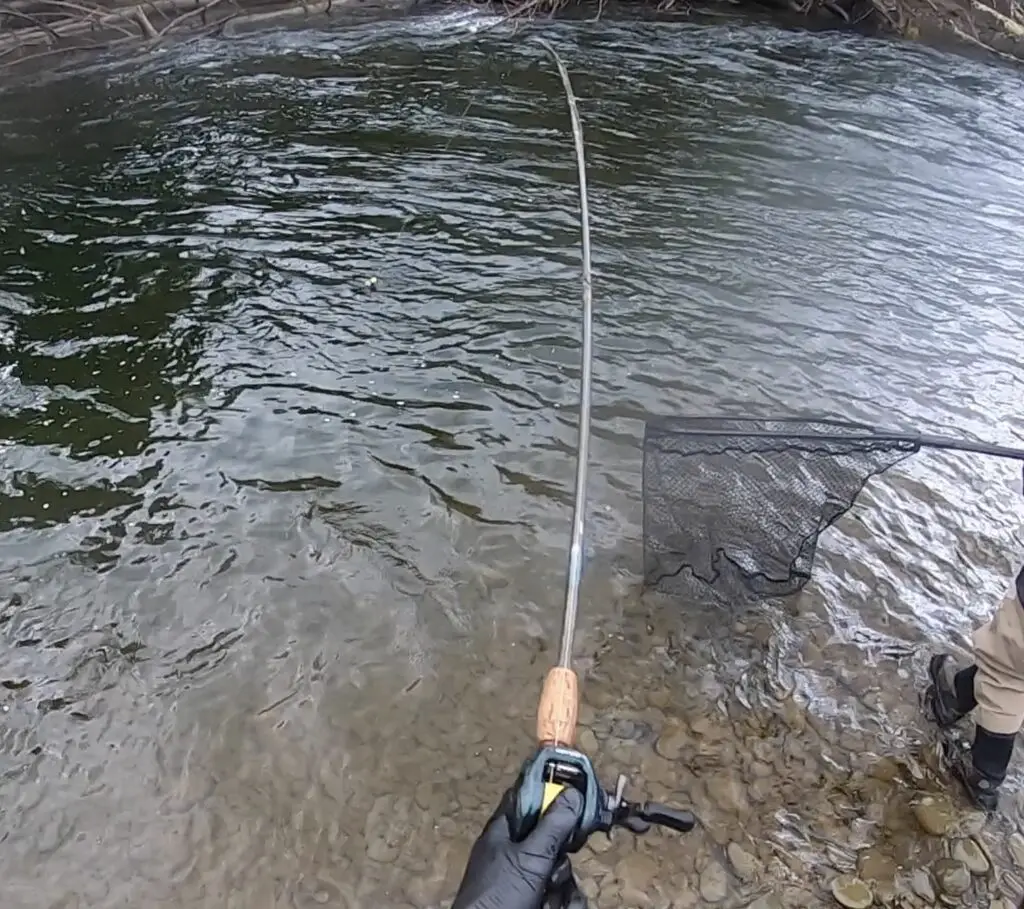
Given the above, if you just “thumb the spool” when the salmon is close enough to net and its head is facing upstream you can dramatically increase netting success.
By putting your thumb on the spool to manually prevent any line from releasing, you can lead a salmon right to the net in the critical second.
There’s some risk to this maneuver though.
The minimal risk involved is well worth it I believe and can also be mitigated by releasing your thumb from the spool if the salmon manages to turn its head downstream.
Oftentimes times a salmon will not have the strength to break you off unless it has turned downstream.
So you can keep it from turning by thumbing the spool for just a split second, giving your netter enough time to do the scoop.
I’ve never lost a fish like this, no matter who’s on the net!
A Few Additional Salmon Fighting Techniques
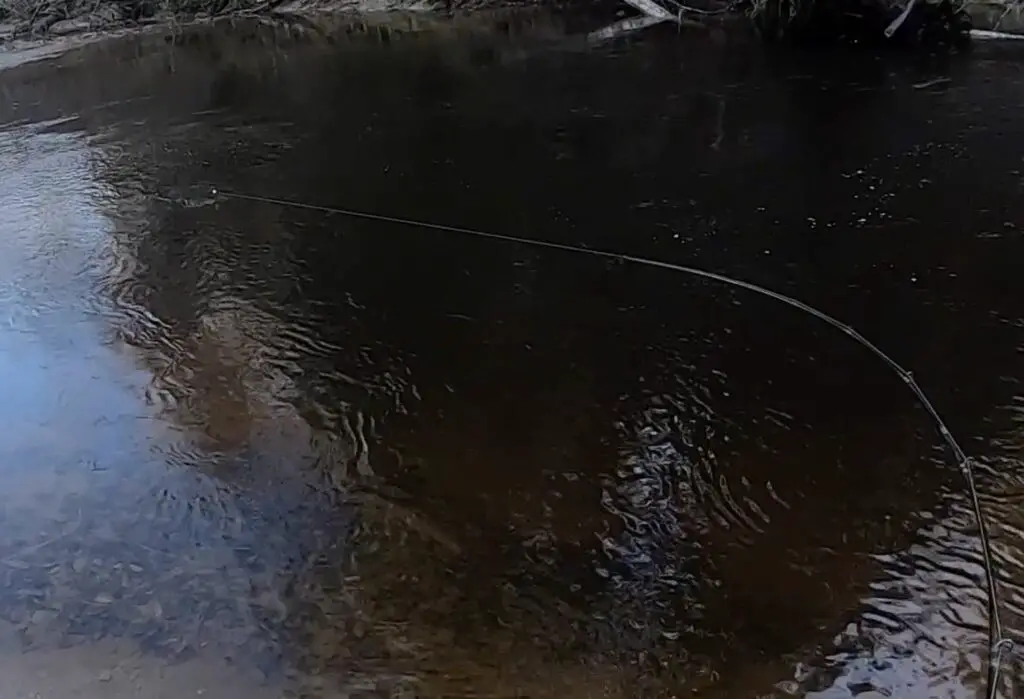
An important aspect of fighting salmon in the rivers is to keep their heads in the water.
This is done by maintaining side pressure vs top pressure on the salmon. When you pull a salmon towards the surface with straight up and down pressure, it will likely make some impressive aerials.
During these aerials, it’s quite common to lose a salmon due to the extra slack created.
It may be tempting to pull up on a salmon right before the net, but the upward direction of pull should only be done in the exact netting moment along with thumbing the spool.
Do it too early and the fish will thrash around on the surface, making it harder for your netter to see clearly where the salmon is in the water.
Another important aspect of fighting a salmon is not pulling the salmon into shallow water to net. If you are going to pull your fish into shallow water, you might as well just bank it or tail it yourself.
Expecting someone to net your fish in a few inches of water is unrealistic. Keep the salmon in deep enough water (at least 1 ft) to net for the most success.
Landing a Salmon Without a Net
Beaching or tailing a salmon are critical techniques if you are by yourself or you don’t want to trust the people you don’t know down on the gravel bar to net your fish,
Beaching a salmon is a technique which we need two major caveats around:
- Don’t try to beach a salmon that is close to the breaking strength of your leader / mainline. I’ve seen a 17 lb king easily break a 20 lb leader once it was on the beach being dragged up. Oftentimes these salmon can still swim away and even if your line holds, you may bend or break a hook, also allowing it to escape. Reserve this technique for smaller salmon.
- If you cannot keep ALL the salmon you catch because of wild vs hatchery or only certain species, you better be really really sure you can retain that salmon before dragging it on the beach. The salmon you drag onto the beach will likely not make it to spawn if released. Remember…your ability to fish in the future is tied to wild salmon spawning success!
So how do you count fins before landing a salmon by dragging it onto the beach? Control the salmon using thumb pressure on your reel while keeping side pressure so that it’s not splashing around. You should be able to get a clear look to determine species and look for an adipose fin.
What if you need to determine species before landing? Like, let’s say you can keep a wild king, but not a wild coho. The salmon has an adipose fin and is very chrome, so you need to get a closer look before deciding to retain it.
Tailing a Salmon
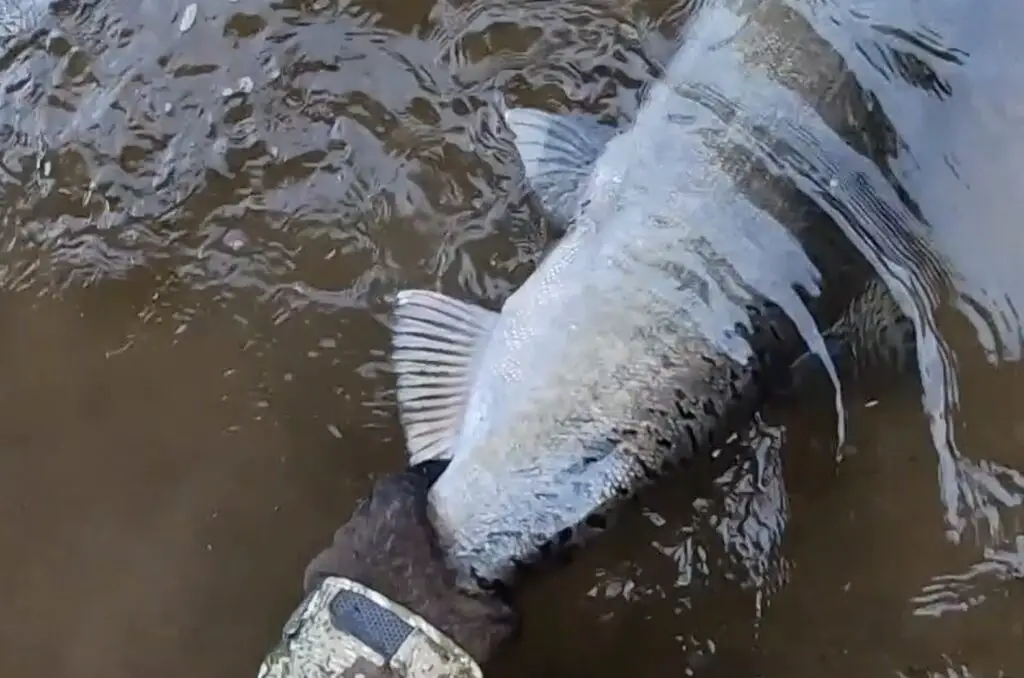
This is where tailing a salmon is a critically important technique. What is tailing a salmon? This refers to grabbing the wrist of the tail of a salmon with one hand while holding onto the rod with the other hand, thereby securing it from escape.
The technique can be done in several feet of water if the salmon has been fought to near exhaustion, but it’s easier in shallow water.
Fingerless wool gloves are one of the most important pieces of equipment you need to tail a salmon successfully.
Not only do fingerless gloves keep your hands warm, but your fingers are available to fish, tie knots, etc.
They also provide a fantastic grip for the wrist of the tail of a big salmon and make an otherwise challenging technique quite easy.
In Summary
Hopefully, you are ready to battle some epic king and coho salmon on the coast this season and next.
Can you think of a netting technique not mentioned here? Drop me a comment or send me an email (kyle@pnwbestlife.com) and I will edit the article and give you credit.
One of my very fishy friends Captain Conner definitely deserves some credit for contributing here.
Good luck and tight lines!